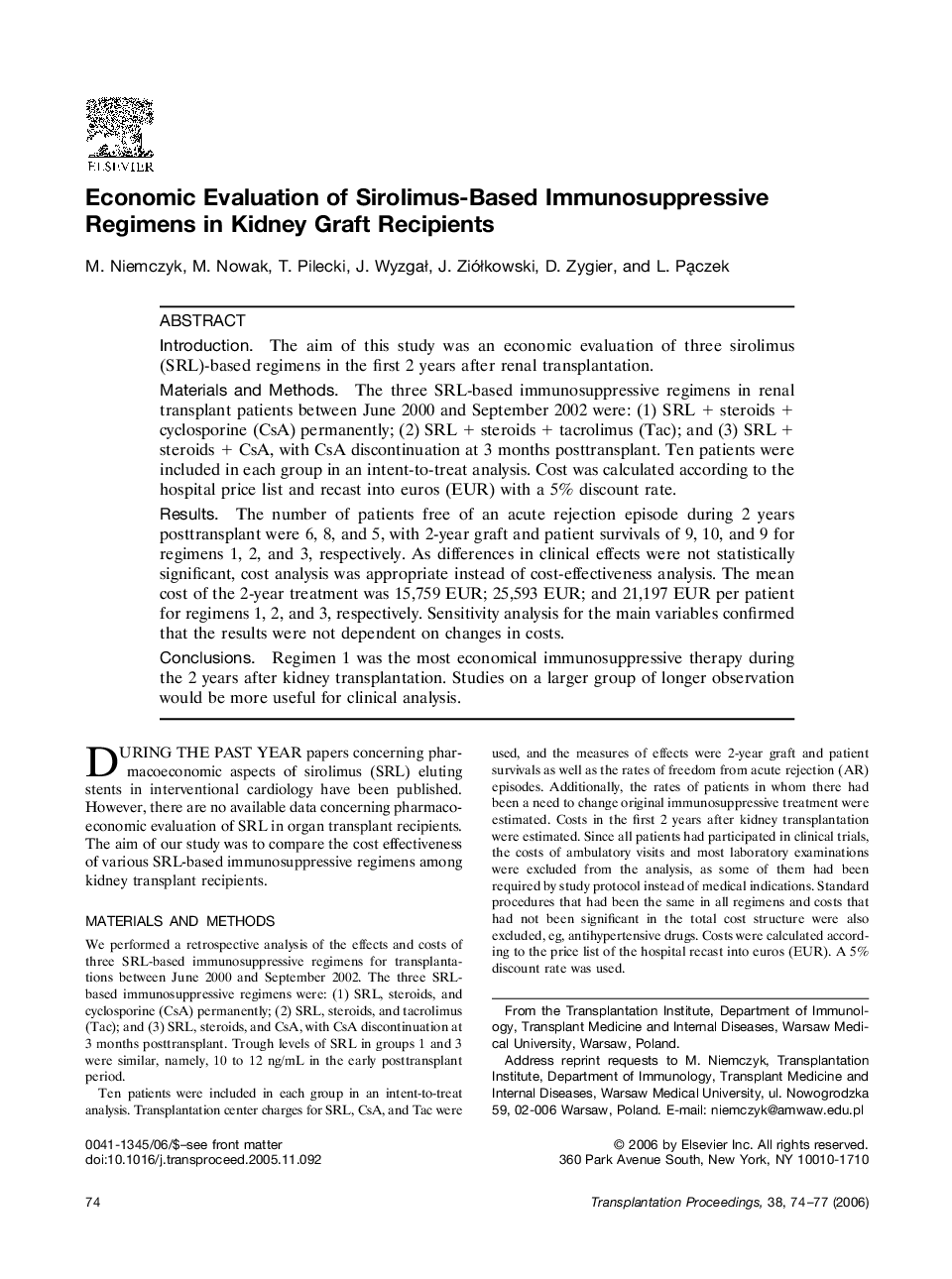| Article ID | Journal | Published Year | Pages | File Type |
|---|---|---|---|---|
| 4261783 | Transplantation Proceedings | 2006 | 4 Pages |
IntroductionThe aim of this study was an economic evaluation of three sirolimus (SRL)-based regimens in the first 2 years after renal transplantation.Materials and MethodsThe three SRL-based immunosuppressive regimens in renal transplant patients between June 2000 and September 2002 were: (1) SRL + steroids + cyclosporine (CsA) permanently; (2) SRL + steroids + tacrolimus (Tac); and (3) SRL + steroids + CsA, with CsA discontinuation at 3 months posttransplant. Ten patients were included in each group in an intent-to-treat analysis. Cost was calculated according to the hospital price list and recast into euros (EUR) with a 5% discount rate.ResultsThe number of patients free of an acute rejection episode during 2 years posttransplant were 6, 8, and 5, with 2-year graft and patient survivals of 9, 10, and 9 for regimens 1, 2, and 3, respectively. As differences in clinical effects were not statistically significant, cost analysis was appropriate instead of cost-effectiveness analysis. The mean cost of the 2-year treatment was 15,759 EUR; 25,593 EUR; and 21,197 EUR per patient for regimens 1, 2, and 3, respectively. Sensitivity analysis for the main variables confirmed that the results were not dependent on changes in costs.ConclusionsRegimen 1 was the most economical immunosuppressive therapy during the 2 years after kidney transplantation. Studies on a larger group of longer observation would be more useful for clinical analysis.
